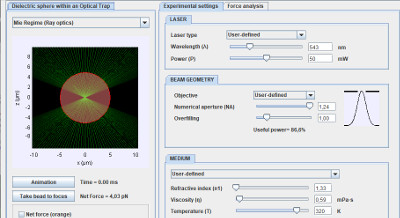Publications: Educational papers

Multi-spectral imaging: a tool for the study of the area burned in wildfires
Hernán Domingo Ramos, Artur Carnicer
European Journal of Physics 42 (6), 065806 (2021)
Multi-spectral images provide powerful information to assess the effects of wildfires. Data can be processed, combined and analyzed in such a way that can contribute to suggest a protocol of action to help recover devastated areas. The objective of this paper is to describe methods to evaluate the surface burned in a forest fire. Combining the information recorded by the visible and infrared sensors of the Landsat 8 satellite, we can estimate the temperature of the surface after the wildfire. Finally, by comparing images recorded before and after the fire, we can estimate the surface burned.
https://doi.org/10.1088/1361-6404/ac221d
Computer-Assisted assessment in open-ended activities through the analysis of traces: A Proof of concept in statistics with R Commander
Jordi Cuadros, Francesc de Paula Martori Adrian, Vanessa Serrano Molinero, Miquel Calvo Llorca Calvo, Artur Carnicer, Antonio Miñarro Alonso
EURASIA Journal of Mathematics Science and Technology Education 15(9), em1743 (2019)
Open-ended tasks are common in Science, Technology, Engineering and Mathematics (STEM) education. However, as far as we know, no tools have been developed to assist in the assessment of the solution process of open-ended questions. In this paper, we propose the use of analysis of traces as a tool to address this need. To illustrate this approach, we developed a modified version of R Commander that collects traces of students’ actions and described a way to analyze them by using regular expressions. We used this tool in an undergraduate introductory statistics course. The traces were analyzed by comparing them to predefined problem-solving steps, arranged by the instructor. The analyses provide information about the time students spent on the activity, their work intensity and the choices they made when solving open-ended questions. This automated assessment tool provides grades highly correlated to those obtained by a traditional test and traditional grading scheme.
https://doi.org/10.29333/ejmste/108456
Design of Optical Systems With Extended Depth of Field: An Educational Approach to Wavefront Coding Techniques
Carme Ferran, Salvador Bosch, Artur Carnicer
IEEE Transactions on Education 55(2), 271 - 278 (2012)
A practical activity designed to introduce wavefront coding techniques as a method to extend the depth of field in optical systems is presented. The activity is suitable for advanced undergraduate students since it combines different topics in optical engineering such as optical system design, aberration theory, Fourier optics, and digital image processing. This paper provides the theoretical background and technical information for performing the experiment. The proposed activity requires students able to develop a wide range of skills since they are expected to deal with optical components, including spatial light modulators, and develop scripts to perform some calculations.
https://doi.org/10.1109/TE.2011.2169414
Understanding Optical Trapping Phenomena: A Simulation for Undergraduates
Josep Mas, Arnau Farre, Jordi Cuadros, Ignasi Juvells, Artur Carnicer
IEEE Transactions on Education 54(1), 133-140 (2011)
Optical trapping is an attractive and multidisciplinary topic that has become the center of attention to a large number of researchers. Moreover, it is a suitable subject for advanced students that requires a knowledge of a wide range of topics. As a result, it has been incorporated into some syllabuses of both undergraduate and graduate programs. In this paper, basic concepts in laser trapping theory are reviewed. To provide a better understanding of the underlying concepts for students, a Java application for simulating the behavior of a dielectric particle trapped in a highly focused beam has been developed. The program illustrates a wide range of theoretical results and features, such as the calculation of the force exerted by a beam in the Mie and Rayleigh regimes or the calibration of the trap stiffness. Some examples that are ready to be used in the classroom or in the computer lab are also supplied.
https://doi.org/10.1109/TE.2010.2047107
Understanding the concept of resolving power in the Fabry–Perot interferometer using a digital simulation
I Juvells, A Carnicer, J Ferré-Borrull, E Martín-Badosa, M Montes-Usategui
European Journal of Physics 27, 1111 (2007)
The resolution concept in connection with the Fabry–Perot interferometer is difficult to understand for undergraduate students enrolled in physical optics courses. The resolution criterion proposed in textbooks for distinguishing equal intensity maxima and the deduction of the resolving power equation is formal and non-intuitive. In this paper, we study the practical meaning of the resolution criterion and resolution power using a computer simulation of a Fabry–Perot interferometer. The light source in the program has two monochromatic components, the wavelength difference being tunable by the user. The student can also adjust other physical parameters so as to obtain different simulation results. By analysing the images and graphics of the simulation, the resolving power concept becomes intuitive and understandable.